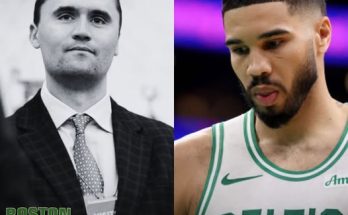BREAKING SCANDAL: WNBA Referee SUSPENDED After Caitlin Clark Injury — Leaked Footage EXPOSES Chilling Truth Behind Her Fall
The WNBA was rocked to its core this week as leaked footage and subsequent internal investigations have led to the suspension of a league referee following a terrifying injury to Indiana Fever rookie Caitlin Clark. What initially appeared to be a hard foul in the heat of play has unraveled into a broader controversy—one that calls into question officiating standards, potential referee bias, and the larger treatment of young stars in the league. Fans, players, and analysts alike are demanding answers after video evidence emerged showing what some are calling a willful disregard for Clark’s safety in the lead-up to the injury.
The incident occurred late in the third quarter of a nationally televised game between the Indiana Fever and the Chicago Sky. Caitlin Clark, known for her sensational three-point shooting and dazzling court vision, was in the midst of orchestrating a fast break. As she crossed half-court, she attempted to split two defenders—an aggressive but routine move for the No. 1 overall pick. However, what happened next left her crumpled on the hardwood, grasping her leg in visible pain as a hush fell over the arena. At first glance, it looked like a typical collision. But new footage obtained from an alternate broadcast angle shows something far more disturbing: a late shove to Clark’s back from a Sky forward—one that appeared to go unnoticed by the officiating crew.
The footage, leaked by a production assistant with access to raw camera feeds, quickly made its way across social media. Within hours, it had been shared millions of times. The angle, captured from a floor-level camera behind the play, shows Clark already slightly off-balance as she splits the defenders. Just as she takes her final stride, a clear and forceful two-hand shove sends her lurching forward, unable to brace herself before crashing to the court. No foul was called. Play continued. Clark remained on the floor for several seconds before medical staff assisted her off. The referees, unmoved, allowed the game to proceed as though nothing had happened.
It didn’t take long for the outrage to build. Fans flooded the WNBA’s official channels with demands for an explanation. Former players like Sue Bird and Diana Taurasi weighed in on social media, condemning the lack of protection for one of the league’s most promising young stars. “If this had happened to a veteran,” Taurasi posted, “it would have been a flagrant 2 and an ejection. Why is Clark being treated differently?” Even NBA players voiced their concern. LeBron James, who has been vocal about supporting the growth of women’s basketball, called the play “dangerous and unacceptable” and urged the league to take a long, hard look at how their stars are being officiated.
Under growing pressure, the WNBA launched a formal review of the incident. What they uncovered only deepened the scandal. The referee closest to the play—later identified as Marissa Lane, a third-year official—was found to have had a direct line of sight to the shove and still chose not to blow the whistle. Internal audio recordings obtained by league investigators revealed that Lane had discussed Clark’s “flopping tendencies” in a pre-game briefing, citing them as justification for giving her less leeway on borderline contact plays. This was interpreted by many as a smoking gun—evidence of bias that may have influenced a critical non-call resulting in serious physical harm.
The league responded swiftly. In a rare move, WNBA Commissioner Cathy Engelbert issued a late-night statement suspending Lane indefinitely and confirming that the referee violated league protocol by failing to penalize the dangerous contact. “There is no room for subjectivity when a player’s safety is at risk,” the statement read. “All athletes deserve to compete on a level playing field, and any deviation from that standard will not be tolerated.” Engelbert also announced the implementation of a third-party officiating review committee to ensure transparency in similar cases moving forward.
While the suspension may seem like justice served, many feel it’s just the tip of the iceberg. The leaked footage has raised larger questions about the culture surrounding Caitlin Clark’s rookie season. Despite her drawing record ratings, sold-out crowds, and an undeniable boost in WNBA revenue, Clark has repeatedly found herself the target of hard fouls and aggressive defenses. Some attribute it to jealousy. Others see it as a veteran-led backlash to the rapid media hype Clark received before playing a single professional game. But whatever the reason, there is a growing belief that Clark has become a litmus test for how the league treats its young stars—and the results so far are troubling.
Former WNBA MVP Tamika Catchings expressed concern over what she called a “dangerous precedent” being set. “We’re asking these rookies to be ambassadors for the game, to be the face of the league, and yet we’re not doing enough to protect them,” she said in an interview. “Caitlin Clark is a once-in-a-generation talent. If we don’t take care of her now, we’re going to regret it down the line—not just in terms of player safety, but in the message we send to every young girl watching this league.”
Fans, too, have taken notice. Sales of Clark jerseys have surged in recent months, and every game she plays draws significant media attention. Many of those fans are newcomers to the WNBA—young, energized, and eager to see the women’s game finally get its due. But this incident threatens to alienate that very audience. “I brought my daughter to her first WNBA game to see Caitlin,” one fan tweeted. “Now I have to explain why the refs let someone shove her like that without any consequences?”
Meanwhile, Clark’s condition remains under close monitoring. Initial reports suggest that while the injury looked severe, she avoided major structural damage. However, the mental toll of the injury—and the circumstances surrounding it—may linger much longer. In a brief post-game statement, Clark was composed but clearly disappointed. “I love this game, and I know it’s physical. But I just want to be treated fairly. That’s all any player wants,” she said.
The broader implications of the scandal are already being felt. Players union representatives have called for a full audit of referee conduct this season, alleging that Clark is not the only player to be treated unfairly. League officials are scrambling to contain the fallout, as the hashtag #ProtectClark continues to trend online. ESPN and other major networks are dedicating entire segments to the controversy, drawing comparisons to other infamous officiating scandals in sports history.
This moment could become a turning point for the WNBA. The league is at a critical juncture, buoyed by surging popularity but burdened with legacy issues that threaten its progress. The Caitlin Clark incident has exposed fractures that have long simmered beneath the surface—issues of bias, inconsistency, and the protection of talent. Whether the league learns from this moment or merely patches the wound remains to be seen.
In the meantime, Clark’s supporters remain hopeful but wary. The overwhelming sentiment is clear: the game must evolve not just in skill and visibility, but in accountability. Referees must be held to the same standards of professionalism as the athletes they officiate. The stars must be protected—not just because of the money they bring in, but because they represent the future.
For now, the cameras have captured the truth. The fans have seen the footage. The league has taken its first steps toward resolution. But the question that lingers over all of it—like the hush that fell when Clark hit the floor—is simple: What took so long?



